The ballad of the "iron hat" and the simplest balaclava helmets
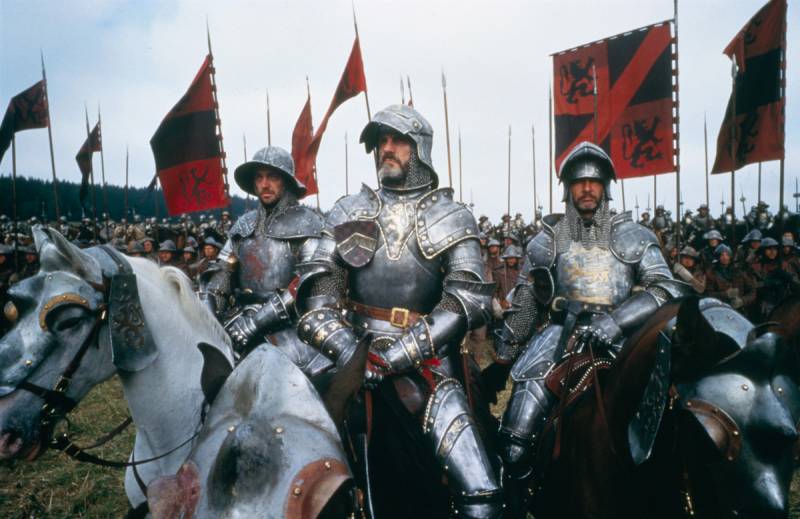
This shot from Joan of Arc (1999) shows two types of helmets popular in the Middle Ages. Far left - "chapelle de fer", the next two - barbutes with a visor
"White Company" by Arthur Conan Doyle
stories about weapons. Middle Ages. It is always nice when your work does not go to waste, but arouses interest. So a recent article about medieval helmets caused a corresponding response: at least two people, but the regulars of the section "History"wanted to get acquainted in more detail with a whole "bunch" of helmets of that time, and they were not too lazy to even paint their chronological sequence. They were interested in: spangelhelm, capelin, sallet, morion, kabasset, and even morion-kabasset, that is, one of the very original "hybrid" helmets. That's just in order to tell more about them, there are, as it turned out, serious problems. Firstly, the framework of the cycle itself - 476-1450. And the morion, kabasset and morion-kabasset helmets go beyond these limits, since they are the helmets of the New Age. And… they are not found in miniatures of handwritten manuscripts! That is, in order to talk about them, one must again contact overseas museums and check whether their attitude towards such a lonely researcher as the author of this cycle has changed after February 24 or not. To a certain extent, this also applies to the Spangelhelm helmet, since its image in miniatures that have come down to us is a rarity, and I don’t want to add Roman time here. Therefore, let's do this: while there is a correspondence on the topic “can-not”, we will continue our story about the helmets of the Middle Ages on the basis of what is - that is, miniatures from manuscripts. Yes, and I would not want to interfere in the materials of this cycle with illustrations from handwritten books with printed ones, and photographs from museums. Well, then we will act according to the circumstances for the common good.
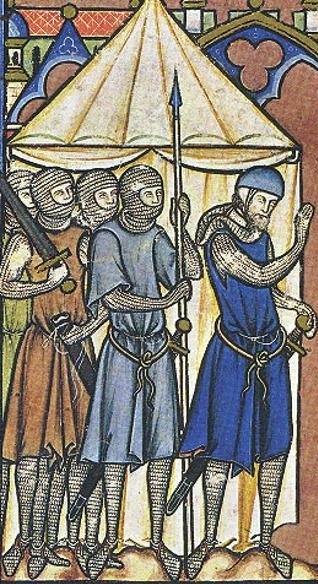
Helmet-Servillier - depicted in such a way that you can’t imagine better. One of the earliest images. "The Maciejowski Bible", 1244-1254 Paris, Pierpont Morgan Library and Museum, New York
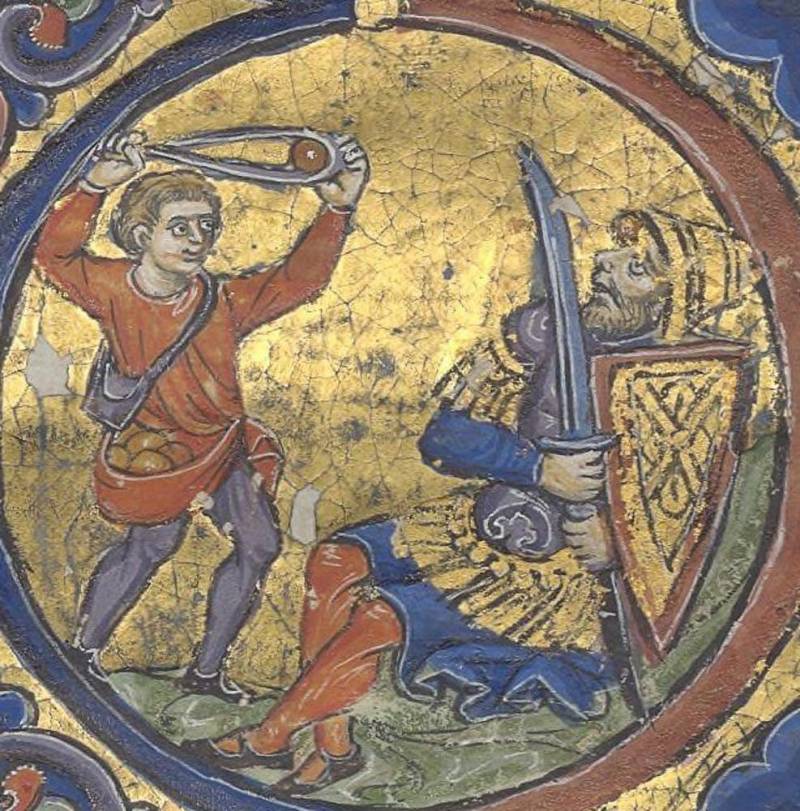
The same years, but a different region, and different miniaturists. Before us again are our old acquaintances David and Goliath. Please note that Goliath has a strange cap on his head that does not look like a helmet or a hat! "The Bible of St. John of Acre", 1250-1254. Acre. National Library of the State of Israel, Givat Ram Campus of the Hebrew University of Jerusalem
Therefore, today our story will go only about the “iron hat” - an extremely popular helmet of the Middle Ages, and the helmets of the servilliers (which can be translated as “servant”) and the bascinet before the transformation of the latter into the well-known Bundhugel.
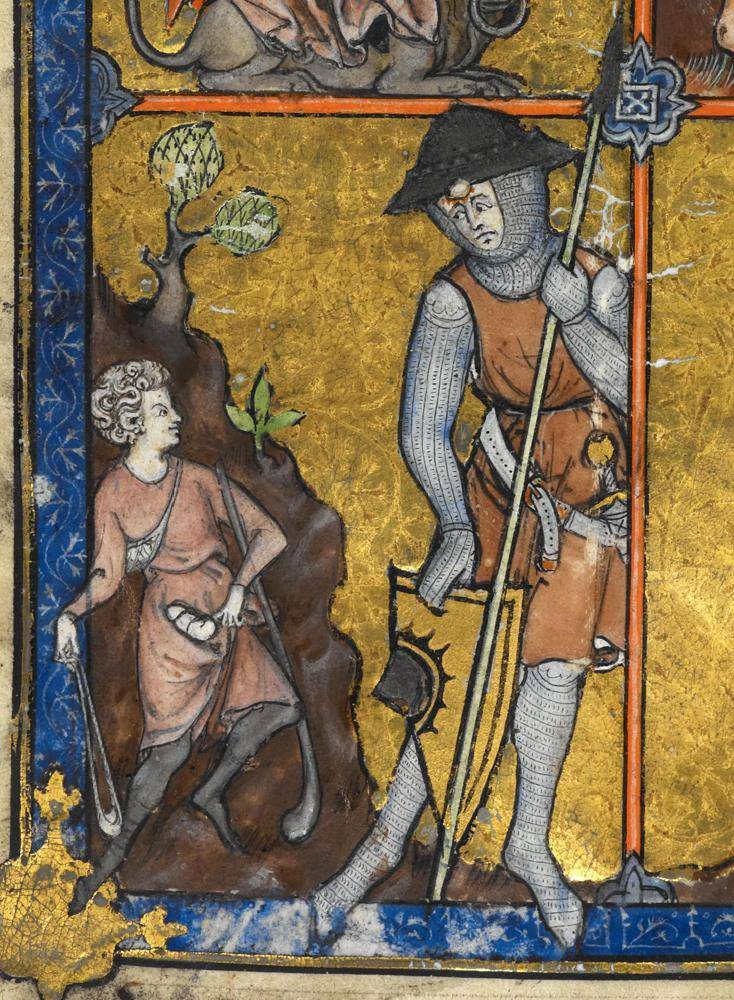
David and Goliath, the last one wearing the Chapelle de Fer helmet. "The sum of the king", 1295 Paris, France. British Library, London
So, the Chapelle de Fer helmet, the simplest protective device for the head. Moreover, images of this helmet have come down to us in the style of ... "maximum", let's say, "minimalism" ...
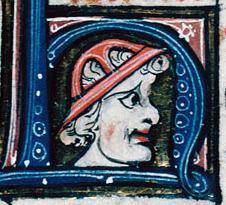
Here is the helmet. But why was it made like this? For the purpose of ventilation or in order to save metal? "Chronicle Badouin d'Aven", 1275-1299 France. Municipal Mediatheque of Arras
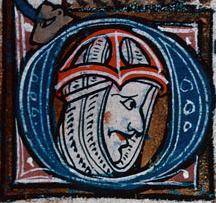
Is it a helmet or a leather balaclava? Who knows... Drawing inside the initial, capital letter in the text of the manuscript. The source is the same
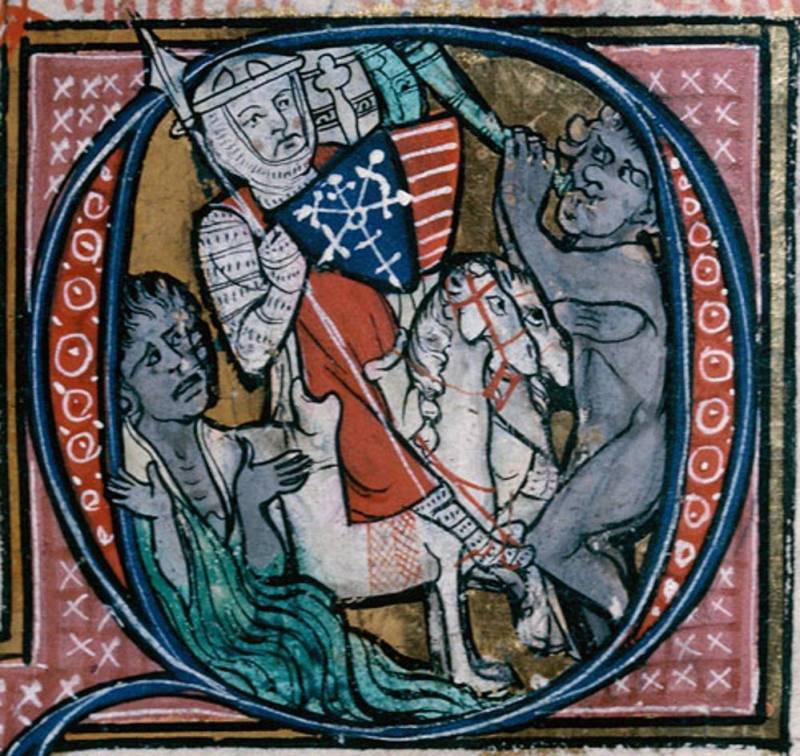
Another initial and a similar helmet from the same chronicle. But there are no holes in it! Same source
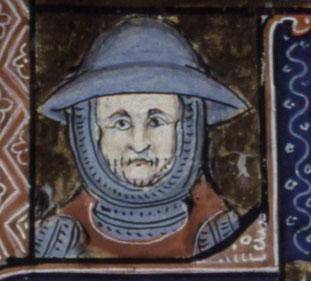
And finally, we have before us a typical for the last quarter of the XIII century. helmet-hat "chapelle de fer". "Historical Bible", 1300-1350. National Library of France, Paris
Let's start with the fact that the iron hat helmet did not appear until the end of the XNUMXth century. In any case, this is the opinion of such an authoritative British researcher of this topic as K. Blair. "Chapelle de fer" (as it was called in French) in England was called "shape" (shapewe). The crown of the helmet was not deep and had different shapes: conical, sphero-conical, conical with a flat top, hemispherical. At the same time, it was always supplied with fields, larger or smaller, also of a conical shape. Even a village blacksmith could make such a helmet, which is why it was the “iron hat” that became the most massive helmet of medieval infantry. Although not only…
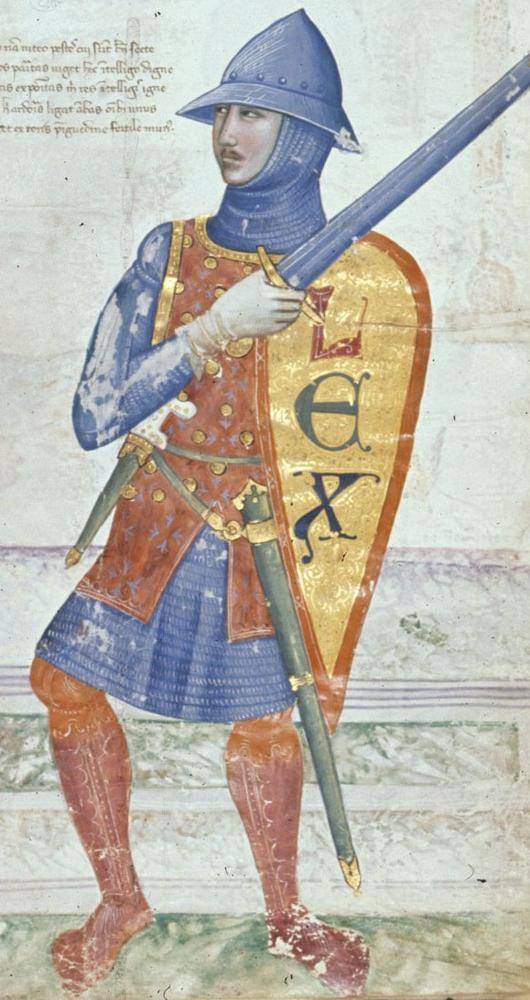
The most famous knight in the "hat". "Appeal in verse to Robert of Anjou, King of Naples", 1335-1340. Tuscany, Italy. British Library, London
As already noted in the previous material, in order to protect their essentially priceless heads as best as possible, by the middle of the 1309th century, warriors of the knightly class began to wear not only a quilted cap and a chain mail hood under the “big helmet”, but also a hemispherical iron cap, called servillera. It's funny that in some cases this balaclava was associated with another - a bascinet (or were they at first so similar that they were even confused?). The same name was also used to designate a balaclava in general, so that in one French document of XNUMX one can even read that each bascinet must also be equipped with its own servillier.
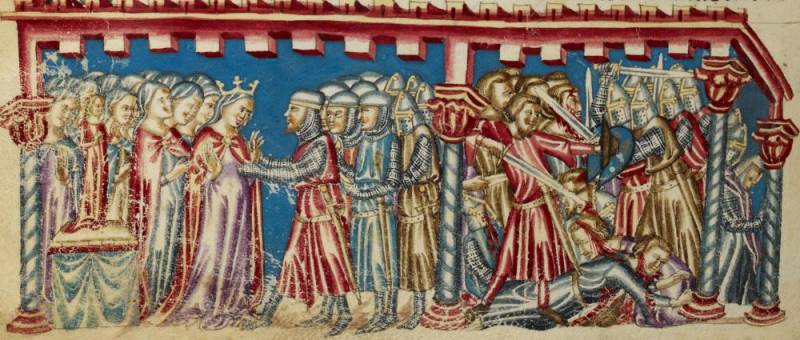
In theory, in this miniature from the manuscript "Ancient History before Caesar", 1325-1350. Naples, Italy. The British Library, London, should present clothing and armor from the era of the Ancient World. But since the illustrators of the Middle Ages did not possess historical thinking, as well as knowledge of the past, they depicted the present very accurately. In particular, helmets-balaclavas of the XIV century. and "big helmets" like "sugar loaf"
That is, in any case, it was a globular helmet with a shallow fit on the head, worn over a chain mail hood! The term "bascinet" itself is rare in texts around 1300. Then more and more often until 1450, after which it is used less and less and completely goes out of use by 1550.
Thus, in this case we can talk about the development of balaclava helmets, and we will most likely never know how exactly they were called in each specific case.
K. Blair noted that their development led to the emergence of three forms. The first was a small rounded helmet with protrusions on the sides to protect the ears and with a chin strap to hold it on the head - a typical servillier. Obviously, both ordinary warriors (if they didn’t have enough money for anything else!), And noble knights could wear it as a constant head protection, and just before a spear collision, over it they put on their painted and decorated with heraldic figures " big helmets.
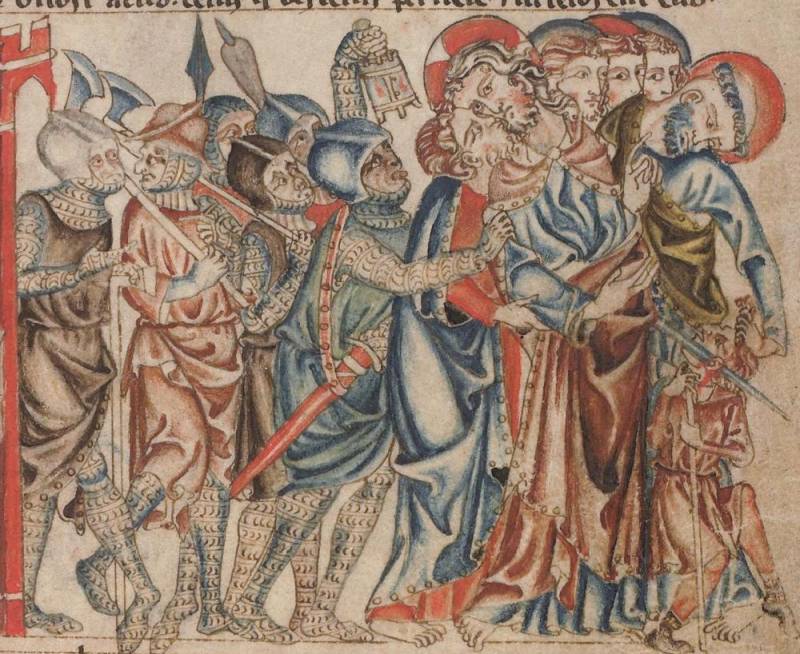
A very interesting source is the Holkham Bible, 1327-1335. England. Posner Memorial Collection, London. The theme of the miniature is, in general, banal: "Judas kisses Christ." But the helmets on the warriors are very interesting. On the second from the left is a rusty helmet "chapel de fer", and all the rest are clearly in helmets with a reinforcement rib, characteristic of barbute helmets
“Helmets of the second type” - with a conical or hemispherical top and an arcuate cutout for the face, and descending almost to the shoulders on the sides and back, just refer to barbute helmets. And sometimes they could have both a nasal and a movable visor. When the visor was closed, this helmet was often indistinguishable from a "grand slam". Liliana and Fred Funken call such helmets without a visor - barbute sallet. Well, with a visor, they were also very similar to a bascinet helmet, but not a bascinet-bundhugel. He has a visor with perforated holes for breathing with a conical ledge. But we talked about it in the previous article ...
The last third type is a high conical helmet, the lower edge of which extends just above the line of the ears. It was used from the XNUMXth to the XNUMXth centuries, although it is impossible to establish exactly which helmet it came from, according to C. Blair. And you can call it both a bascinet and a barbut, since they are very similar to each other.
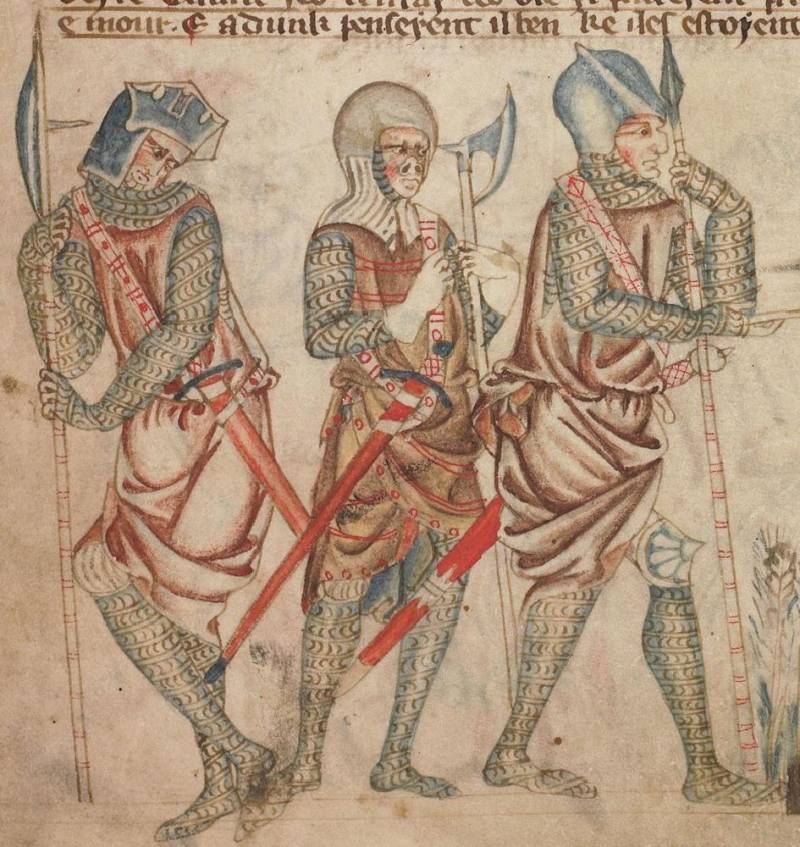
But on this miniature, all three of these helmets, as if specially for us, lined up in a row: the first on the left is a barbut (and with a visor), the one in the center, on the head of a warrior with a cut off nose - the first type (servillier), and the last one - barbute with reinforcement rib. He is the tallest, although pointed and not very much. Holkham Bible, 1327-1335 England. Posner Memorial Collection, London
E. Oakeshott, a well-known "master of swords" and the author of many books on the history of knightly weapons, believed that the Icelandic chronicles (when compared with the much more famous annals of England and France) give us very detailed descriptions of the full armament of a knight of the 1250th century. In one such chronicle, Speculum regale (Royal Mirror) is a Norwegian didactic text in Old Norse dating from around XNUMX. Its author gives his son instructions on what his military duty is and in what armor and what weapon is best for the “correct knight” to fight. There, several times there is a mention of a “good helmet” and an “iron cap” with “suspended details”. Perhaps this meant a helmet with suspended side and rear plates, like the Wendel helmets, or perhaps a more fashionable version of a small hemispherical helmet with a lifting visor.
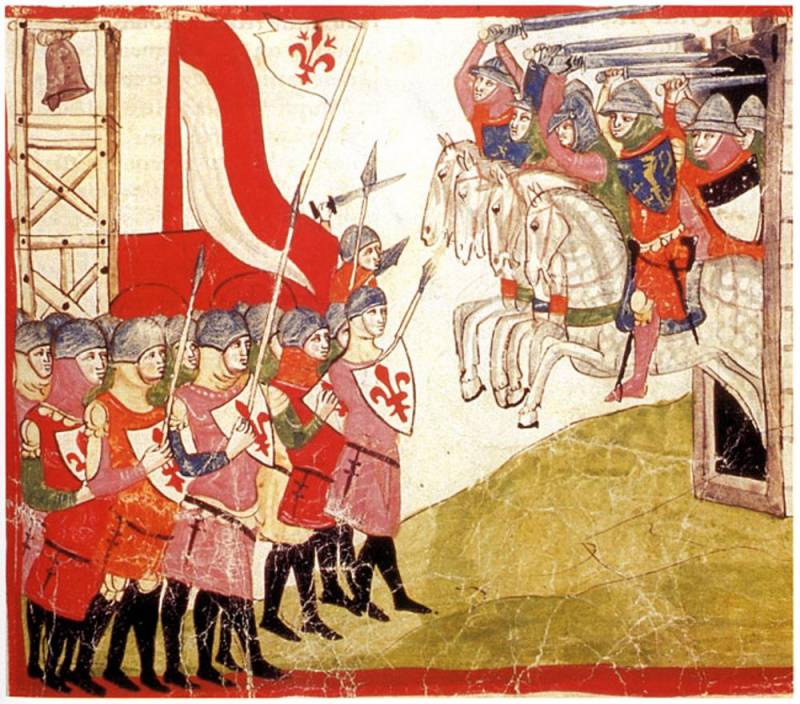
New Chronicle, 1348 Vatican Apostolic Library, Rome. What do we see here? The Guelphs against the Ghibellines, some with Chapelle de Fer helmets, while others with Servilliers helmets. The sign of the Ghibellines was a white rose or a red lily, so they are on the left in this miniature.
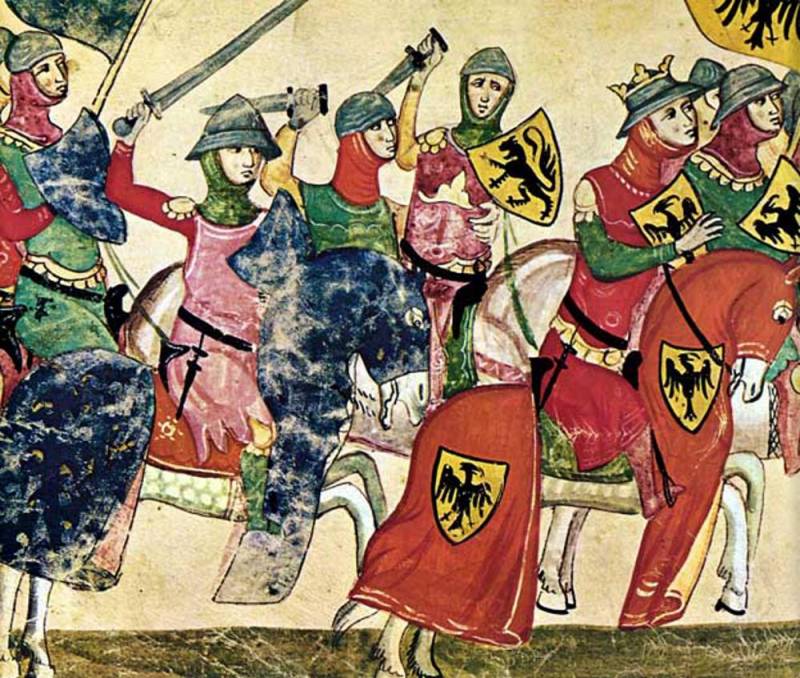
The same source. Only now the knights of Guelph are on it. As for the knight in the crowned "hat", it is most likely Louis (Ludwig) IV of Bavaria. Although ... it depends on how to look at his coat of arms on a blanket and on a shield. The eagle on a blanket must obey the "rule of the left hand", that is, look with your head towards the enemy. Therefore, on the coat of arms on the blanket on the right, the eagle should look forward and to the left, and vice versa on the left side. Here he looks to the right and on the blanket, and on the shield ... But he should look to the left on the shield!
Returning to the story of the “iron hat”, it should be noted (by the way, C. Blair himself stubbornly calls it cabasset in his works!) more metal is consumed than before, but the protective properties of such a helmet also increase - it is easier for blows to slide off it. In the XIV and XV centuries. in England, the chain mail hood loses its top, and what remains of it begins to be fastened to a balaclava helmet, which is now more and more often called the bascinet. Such a shortened hood in England was given the name aventale (preface), and in France - kamai. But usually in everyday life in these countries were both of these words. It is interesting that in the manuscript of the "Life of Two Offs", dating from about 1320, you can see a knight dressed in chain mail and with a chain mail hood that completely covers his head, but at the same time - with a visor on his face! It is not clear how it was attached to the chain mail, but why did the artist draw this? By the way, this is the only image of a visor fixed in such a strange way.
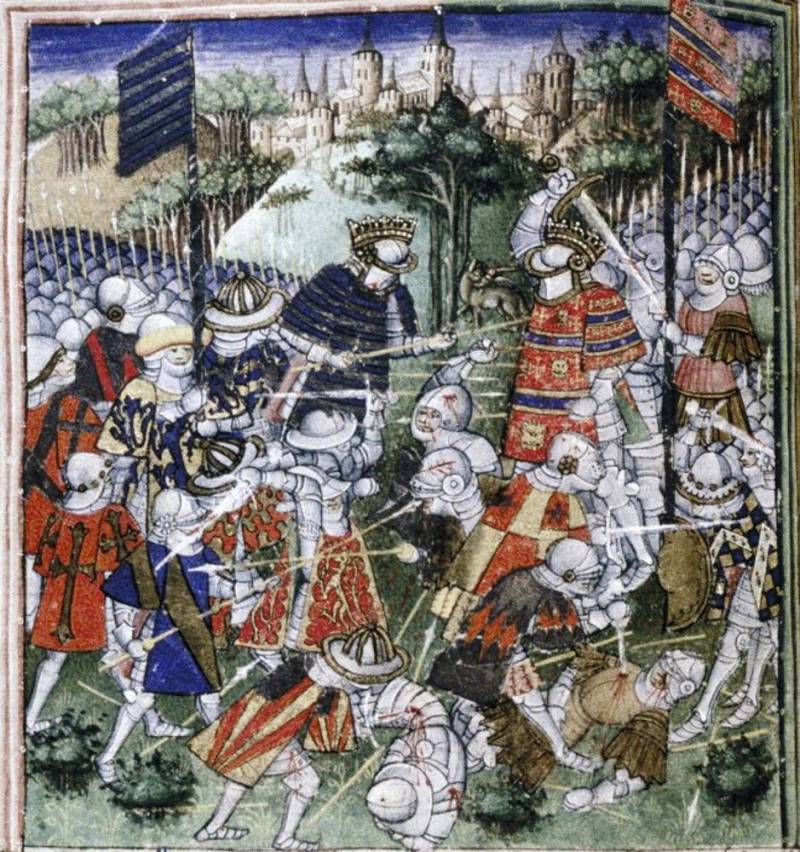
And, finally, a miniature from the Chronicle of England before Henry V, 1440-1450. Bodleian Library, Oxford University. Pay attention to the helmet of a warrior in its very center. Now it’s clear where the British got their helmets from in the First, and even in the Second World War!
So? Then a lot of different helmets and their varieties appeared - the “grand bascinet”, and salads (Italian, German, French), and barbutes, and arme. But the “iron hat” (also called the chapel) eventually survived them all, and it was worn not only by infantrymen, but also by the most noble knights, although usually with a bouvier chin, and why this is so is understandable. Well, the last version of the “hat” was put on by the British infantry during the First World War! This “basin”, which became legendary in its own way, was patented in 1915 by Londoner John Brodie, taking as a basis precisely the medieval “iron hat” of the chapel!
PS Well, about all the other "helmets" of the Middle Ages and the era of the New Age, stories will follow ...
Information